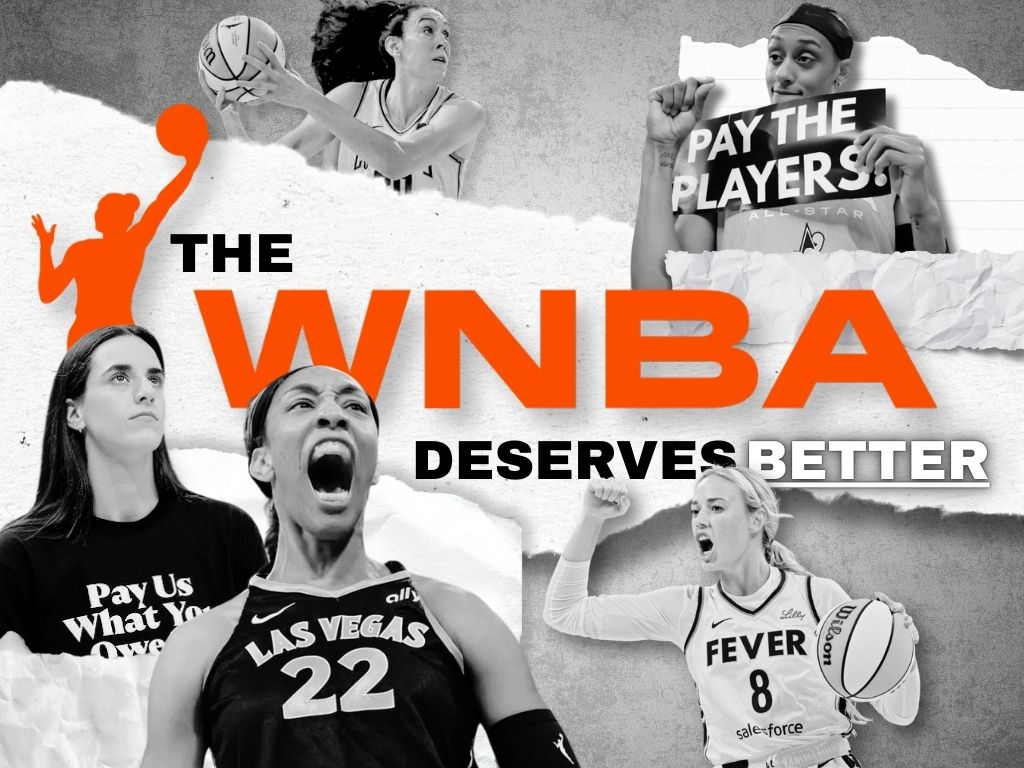By Garima Chahal, September 25 2025—
The WNBA has spent years battling for recognition and fair treatment, only to, once again, find itself as the butt of someone else’s joke. At recent games, sex toys have been thrown onto the court. What some dismiss as a crude prank may in fact be a marketing stunt for a cryptocurrency website, a desperate attempt to “go viral” by humiliating female athletes.
But let’s be clear: no one is laughing except for the people profiting off this spectacle and the trolls who want to see the WNBA fail. For the players themselves, this isn’t a quirky publicity moment. It’s a degrading reminder that despite their talent and hard work, women in sports are still treated as sideshows in leagues dominated by men.
Disrespect masquerading as humour
When a sex toy lands on the court, it’s not simply an interruption of the game — it’s a blatant message of disrespect. The object isn’t neutral — it is a deliberate attempt to sexualize and belittle women athletes. For players who spend their lives training to compete at the highest level of their sport, this intrusion isn’t funny. It’s harassment.
What makes it worse is the speculation that this isn’t just the work of a rogue fan but a coordinated marketing ploy by a crypto company trying to capitalize on controversy. If true, it reveals an ugly truth: the bodies and dignity of women athletes are being used as props in someone else’s business strategy. In that sense, the “stunt” isn’t just juvenile — it’s exploitative.
A league that deserves better
The WNBA has always had to fight for legitimacy. Since its founding in 1996, critics have dismissed it as “subsidized” by the NBA or “boring” compared to men’s basketball reducing athletes to stereotypes instead of acknowledging their athletic achievements.
Meanwhile, the players themselves continue to prove their worth. At the recent WNBA All-Star break, players held up signs demanding equal pay, highlighting their determination not only to excel athletically but also to push for the fairness and recognition long denied to women’s sports.
The league has produced legends like Lisa Leslie, Sue Bird, Diana Taurasi and Maya Moore, athletes whose skill and leadership inspire not just young girls but anyone who loves the game of basketball. Current stars like A’ja Wilson, Breanna Stewart and Sabrina Ionescu are redefining the sport for a new generation. And yet, they remain underpaid and undervalued compared to their male counterparts.
The average WNBA salary is around $120,000, compared to more than $9 million in the NBA. While the pay gap is often defended by pointing to revenue differences between the leagues, the real issue is how that revenue is shared. WNBA players receive only about nine per cent of league revenue, whereas NBA players take home roughly 50 per cent. This disparity isn’t just a matter of economics — it reflects systemic inequities: women’s sports receive far less media coverage, sponsorship and institutional investment.
It’s not that women’s sports inherently “don’t draw fans,” but rather that the infrastructure has long been designed to keep them in the shadows.
The double standard
Imagine, for a moment, if something similar happened at an NBA game. If a sex toy were thrown onto the court during a Lakers–Celtics matchup, the story would dominate headlines. The NBA would issue strong statements. Security would be tightened. There would be outrage on talk shows, op-eds in major newspapers and swift consequences for whoever was responsible.
In the WNBA, the incident is treated as a joke or a quirky internet story. The lack of widespread outrage signals something important: society still doesn’t take women’s sports seriously enough to defend them when they are disrespected.
The same act that would be a “scandal” in men’s sports becomes a punchline when it happens to women.
Why this matters
At a time when WNBA players are speaking out about pay equity and demanding fair treatment, this incident undercuts their fight. It distracts from their message and reinforces the tired stereotype that women’s sports are not to be taken seriously.
For players, the stunt is a painful reminder that their careers are still undervalued. They already spend the off-season playing overseas to supplement their income, something no NBA star has to do. They already face constant online harassment, questioning whether their league should even exist. Adding public humiliation to the list is not only unfair — it’s demoralizing.
And for fans, it raises a bigger question: what does it say about us if we allow this behaviour to be normalized?
Sports are supposed to be about athletic excellence, teamwork and respect for the game. When we turn a blind eye to sexism in sports, we undermine those very values.
The bigger picture
The WNBA doesn’t need viral stunts. What it needs and what the players have earned is basic respect.
The league has been steadily growing its fan base, signing new media deals and breaking attendance records. The 2024 WNBA season had one of its highest average viewership numbers in history, with fans tuning in to watch the Las Vegas Aces, New York Liberty and other teams showcase elite-level basketball. The growth is real, but it’s fragile as it’s constantly threatened by the way sexism frames women’s sports as “less than.”
The truth is simple: women’s sports aren’t failing. They’re being failed by media that undercovers them, by sponsors that undervalue them and by a culture that treats disrespect as comedy.
Until that changes, moments like this won’t just be embarrassing stunts. They’ll be proof of how far we still have to go.
This article is a part of our Opinions section and does not necessarily reflect the views of the Gauntlet editorial board.

